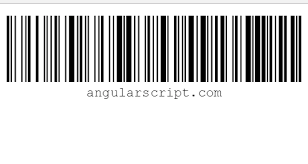Fiber optic communications have experience explosive growth over the past two decades. Making their presence felt in a growing number of spheres of our daily life. During the early stages of its development, this technology was mostly utilise solely between major internet service providers (ISP).
These days, fibres may be found virtually anywhere, from the office cubicle in which you. Work to the telephone poles outside your house and possibly even within your own residence.
The expansion of this sector necessitate the creation of a variety of patch panels that could be utilise in a wide range of settings. Without compromising their functionality. If you are unclear of the requirements that your project entails, please get in touch with us at telhua. Com for a comprehensive guide to choosing the appropriate fibre optic panel for your needs. Rack mount fibre patch panels. Which are often refer to as interface panels, allow several optical fibre cables and pieces of equipment to be connect to one another.
There are 19″, 21″, and 23″ variants of patch panels available to match a variety of rack configurations, and some of them may even be mount on the wall. read more
physical path
If you’re looking at a physical patch panel, it’s often a metal box that has adapter panels, fibre splicing trays. And room for storing surplus fibre. If you’re looking at a virtual patch panel. It’s typically an LCD screen. The foundation of its design is an array of ports. Each of which interfaces with another patch cable and is connect to optical equipment situation a different part of the building. Its primary function is to facilitate the transfer of data.
The adapter panel serves as an interface for both the outside ports and the internal ports that are connect to the enclosure. The ports on the interior are permanent since it is not intende for the connections to be unplugge at any time.
On the other hand, the outer ports are reserve for fibre patching cables, which may have connections insert into them or remove from them as necessary.
fiber optics
In order to facilitate fusion with a fibre optic pigtail, the fibre optic splice tray has been impeccably encase within the enclosure. After that, these pigtails are plugg into the adapter port that is fix on the interior of the adapter panel.
Optics of fibre glass Your patch panel connector type might be any of the following depending. On the age of the fibre that you have already put in your network:
LC, also known as a “small connection,” SC, which stands for “subscriber connector,” ST, which stands for “straight tip,” FC, which stands for “fibre connector,”. MT-RJ, also known as a “mechanical transfer registere jack,” and MPO/MTP, which stands for “multi-fiber push on” and “multi-fiber pull.”
The advantages of employing the use of a fibre patch panel It is extremely important for fibre optic cables to have a simple. Termination process since this makes it much simpler and more. Organise to handle all of the connections that are brought into a single patch panel area.
This approach also enables different devices to be linke in a variety of orders by utilising the ports that are locate on the patch panel, so preventing costly damages that. May be incurre as a result of wear and tear on the input jacks and ports of networking equipment. Common technical criteria for patch panels.
You may choose to have an indoor or outdoor device, as well as one that can be rack-mount or mount on the wall. You have the option of simply having front access, or having access to both the front and the back. What kind of wiring do you require exactly? Do you solely perform direct patching, or do you also splice and patch?
The chassis may be delivere unload as a bare chassis, load with adapters simply, or load with adapters and pigtails, depending on the customer’s preference. What works better for you – a fix sliding or pivoting mechanism? Before making a final choice, it is important to take into account the application that will be using the single fibre, conventional ribbon. Or SpiderWeb Ribbon (SWR) cable.
How does a patch panel actually function? At order to properly arrange and safeguard your Ethernet connections, you will need to equip your wiring closet. With punch-down blocks and fibre optic patch panels.
These components can be found in most home improvement stores. To connect the wires that make up the network infrastructure to the rear of the patch panel.
You will need a punch-down tool as well as wire strippers. read more
fibre patch pane
A fibre patch panel will typically have two sections: one for housing a fibre optic network adapter (bulkhead receptacle) and another. For housing fibre optic splice trays and any excess lengths of cable. The first section will hold the adapter, and the second section will house the trays and any excess cable.
Consider utilising a tray that is create only for the purpose of neatly storing extra patch cables if you are interest. In achieving a more organise method of cable management. Installing a patch panel allows you to distinguish the spot where physical cable terminates from your networking equipment.
This may be done in a clean and organise manner. Due to the fact that each run of wire is punch down on the other side of the panel, this also gives a simpler way to manage cable lines. This side of the panel has punch-down terminations and color-coding for T568A and B wiring. These features are equippe on this side of the panel.
There are additional independent verification testing symbols for UL and 3P conformity. These marks can be seen on the packaging. Patch cables are use to connect the ports on the front of the patch panel to the networking equipment in your home or business (such as switches, routers, and hubs).
Most patch panels have redundant power supply link to them so that even. If the power goes out, there won’t be any interruptions in the data transfer that takes place. Patch panels that are specifically designe for this purpose. Much like switching routers, make it possible to switch between two connect devices simply by pressing a button, without the need to rework any of the connections in between.



